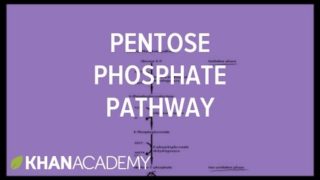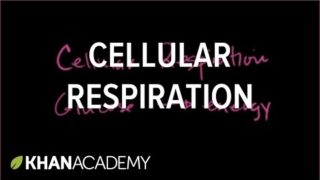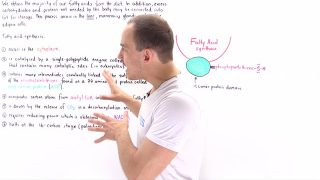Citric Acid Cycle (Krebs Cycle)
Overview of the Krebs or Citric Acid Cycle
Watch the next lesson: https://www.khanacademy.org/science/biology/cellular-respiration-and-fermentation/oxidative-phosphorylation/v/oxidative-phosphorylation-and-the-electon-transport-chain?utm_source=YT&utm_medium=Desc&utm_campaign=biology
Missed the previous lesson? https://www.khanacademy.org/science/biology/cellular-respiration-and-fermentation/glycolysis/v/glycolysis-overview?utm_source=YT&utm_medium=Desc&utm_campaign=biology
Biology on Khan Academy: Life is beautiful! From atoms to cells, from genes to proteins, from populations to ecosystems, biology is the study of the fascinating and intricate systems that make life possible. Dive in to learn more about the many branches of biology and why they are exciting and important. Covers topics seen in a high school or first-year college biology course.
About Khan Academy: Khan Academy is a nonprofit with a mission to provide a free, world-class education for anyone, anywhere. We believe learners of all ages should have unlimited access to free educational content they can master at their own pace. We use intelligent software, deep data analytics and intuitive user interfaces to help students and teachers around the world. Our resources cover preschool through early college education, including math, biology, chemistry, physics, economics, finance, history, grammar and more. We offer free personalized SAT test prep in partnership with the test developer, the College Board. Khan Academy has been translated into dozens of languages, and 100 million people use our platform worldwide every year. For more information, visit www.khanacademy.org, join us on Facebook or follow us on Twitter at @khanacademy. And remember, you can learn anything.
For free. For everyone. Forever. #YouCanLearnAnything
Subscribe to Khan Academy's Biology channel: https://www.youtube.com/channel/UC82qE46vcTn7lP4tK_RHhdg?sub_confirmation=1
Subscribe to Khan Academy: https://www.youtube.com/subscription_center?add_user=khanacademy
Citric Acid Cycle (Krebs Cycle)
Other Videos You Might Like:
Subscribe
Login
1.7K Comments
Newest





